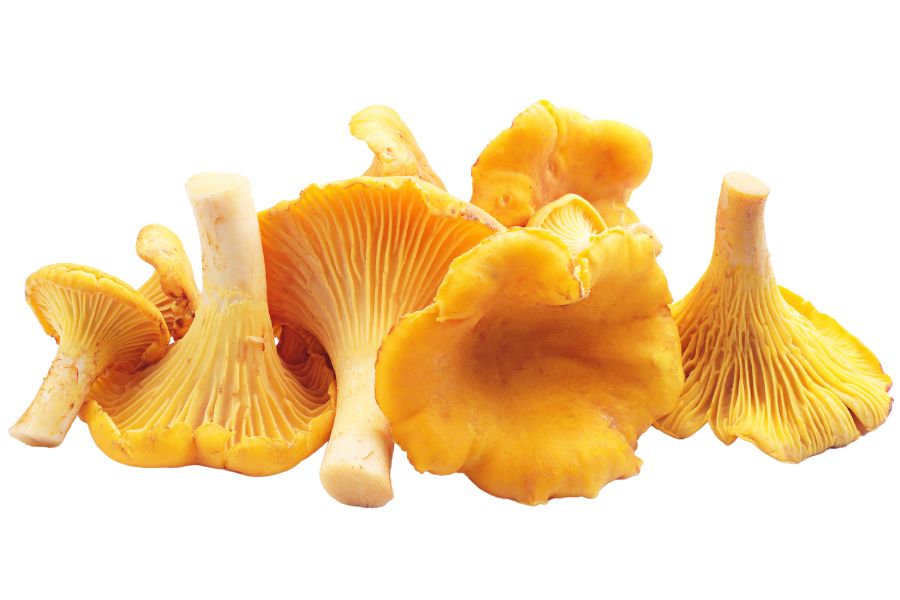There are wild plants growing in New York that are worth more than you’d think, both in flavor and market value. Some of the best finds are hidden in plain sight, like spicebush or wild mint tucked near creeks or shady trails. Others, like ramps, are easier to spot but harder to find before someone else gets to them.
Some of these edible plants have long histories of use and are still valued in kitchens and apothecaries alike. A few are rare enough to fetch a good price at the right market, while others are just hard to grow commercially. That makes a successful harvest all the more satisfying.
There’s far more in New York’s woodlands, wetlands, and meadows than the familiar handful of plants that most people recognize. Knowing what to look for opens up a surprising range of wild foods you’d never expect to find growing together.
What We Cover In This Article:
- What Makes Foreageables Valuable
- Foraging Mistakes That Cost You Big Bucks
- The Most Valuable Forageables in the State
- Where to Find Valuable Forageables in the State
- When to Forage for Maximum Value
- The extensive local experience and understanding of our team
- Input from multiple local foragers and foraging groups
- The accessibility of the various locations
- Safety and potential hazards when collecting
- Private and public locations
- A desire to include locations for both experienced foragers and those who are just starting out
Using these weights we think we’ve put together the best list out there for just about any forager to be successful!
A Quick Reminder
Before we get into the specifics about where and how to find these plants and mushrooms, we want to be clear that before ingesting any wild plant or mushroom, it should be identified with 100% certainty as edible by someone qualified and experienced in mushroom and plant identification, such as a professional mycologist or an expert forager. Misidentification can lead to serious illness or death.
All plants and mushrooms have the potential to cause severe adverse reactions in certain individuals, even death. If you are consuming wild foragables, it is crucial to cook them thoroughly and properly and only eat a small portion to test for personal tolerance. Some people may have allergies or sensitivities to specific mushrooms and plants, even if they are considered safe for others.
The information provided in this article is for general informational and educational purposes only. Foraging involves inherent risks.
What Makes Foreageables Valuable
Some wild plants, mushrooms, and natural ingredients can be surprisingly valuable. Whether you’re selling them or using them at home, their worth often comes down to a few key things:
The Scarcer the Plant, the Higher the Demand
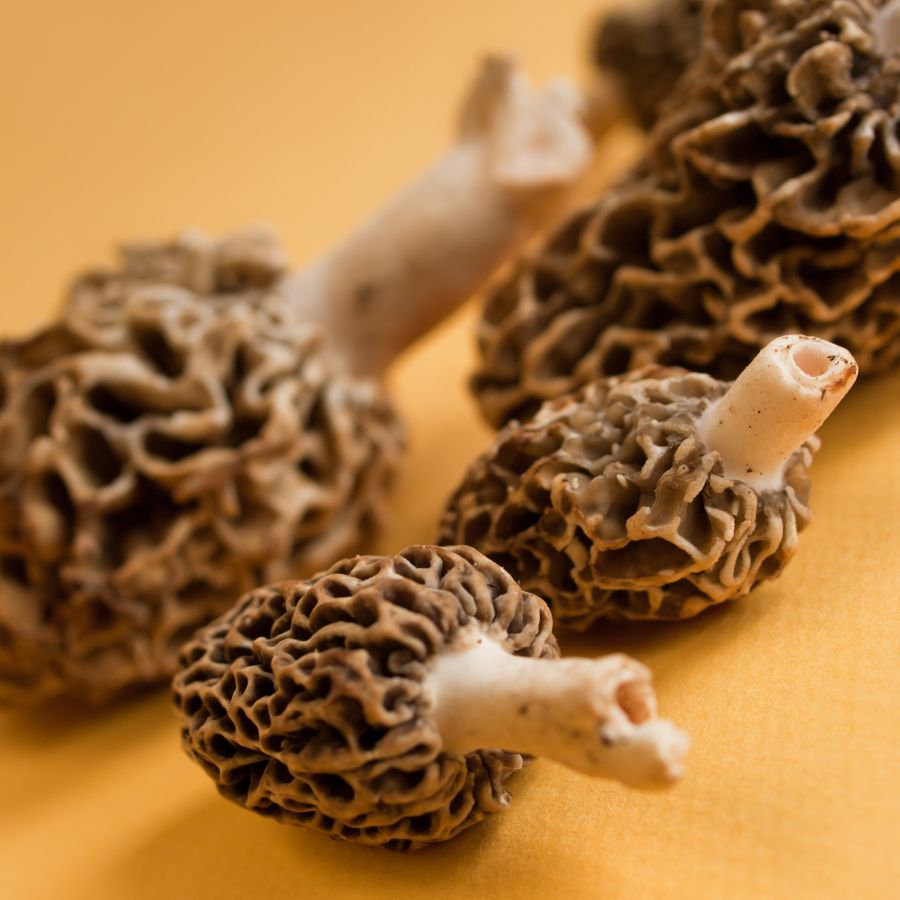
Some valuable forageables only show up for a short time each year, grow in hard-to-reach areas, or are very difficult to cultivate. That kind of rarity makes them harder to find and more expensive to buy.
Morels, truffles, and ramps are all good examples of this. They’re popular, but limited access and short growing seasons mean people are often willing to pay more.
A good seasonal foods guide can help you keep track of when high-value items appear.
High-End Dishes Boost the Value of Ingredients
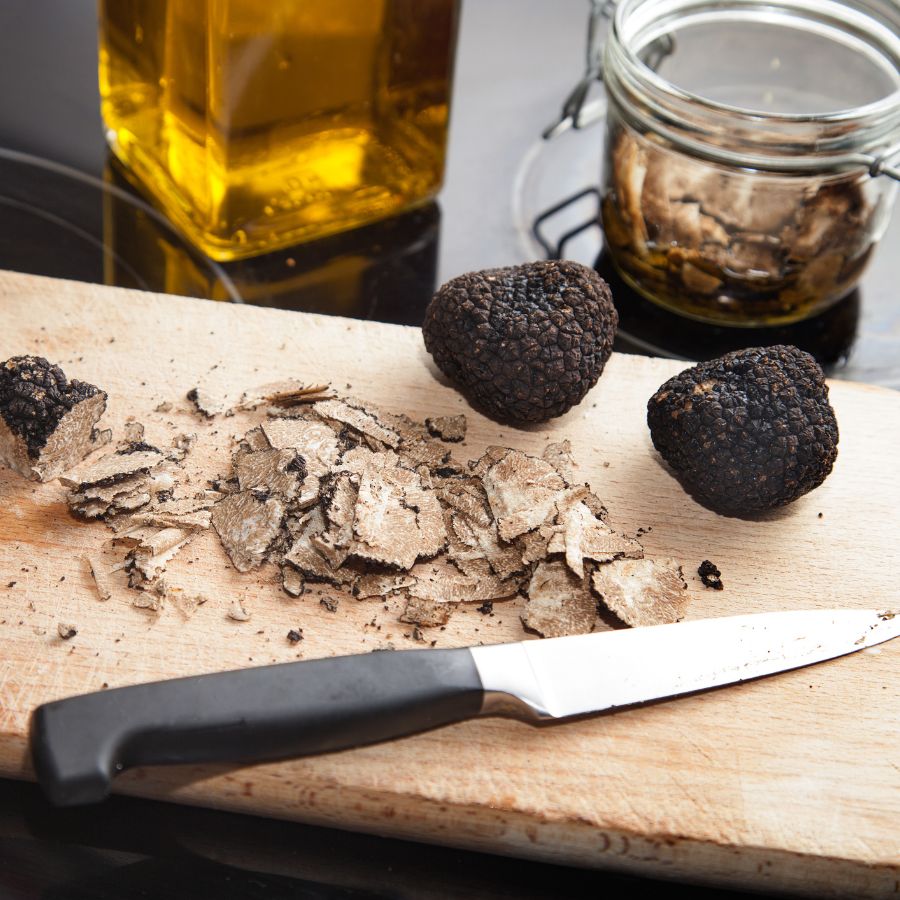
Wild ingredients that are hard to find in stores often catch the attention of chefs and home cooks. When something unique adds flavor or flair to a dish, it quickly becomes more valuable.
Truffles, wild leeks, and edible flowers are prized for how they taste and look on a plate. As more people try to include them in special meals, the demand—and the price—tends to rise.
You’ll find many of these among easy-to-identify wild mushrooms or herbs featured in fine dining.
Medicinal and Practical Uses Drive Forageable Prices Up
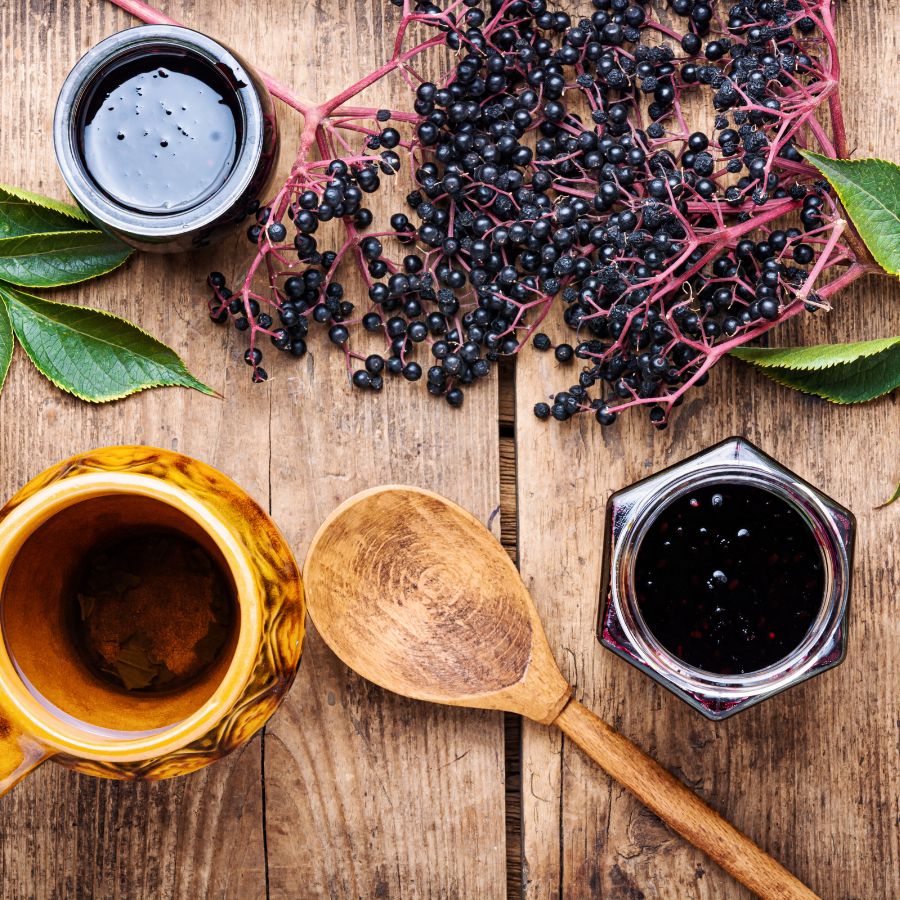
Plants like ginseng, goldenseal, and elderberries are often used in teas, tinctures, and home remedies. Their value comes from how they support wellness and are used repeatedly over time.
These plants are not just ingredients for cooking. Because people turn to them for ongoing use, the demand stays steady and the price stays high.
The More Work It Takes to Harvest, the More It’s Worth
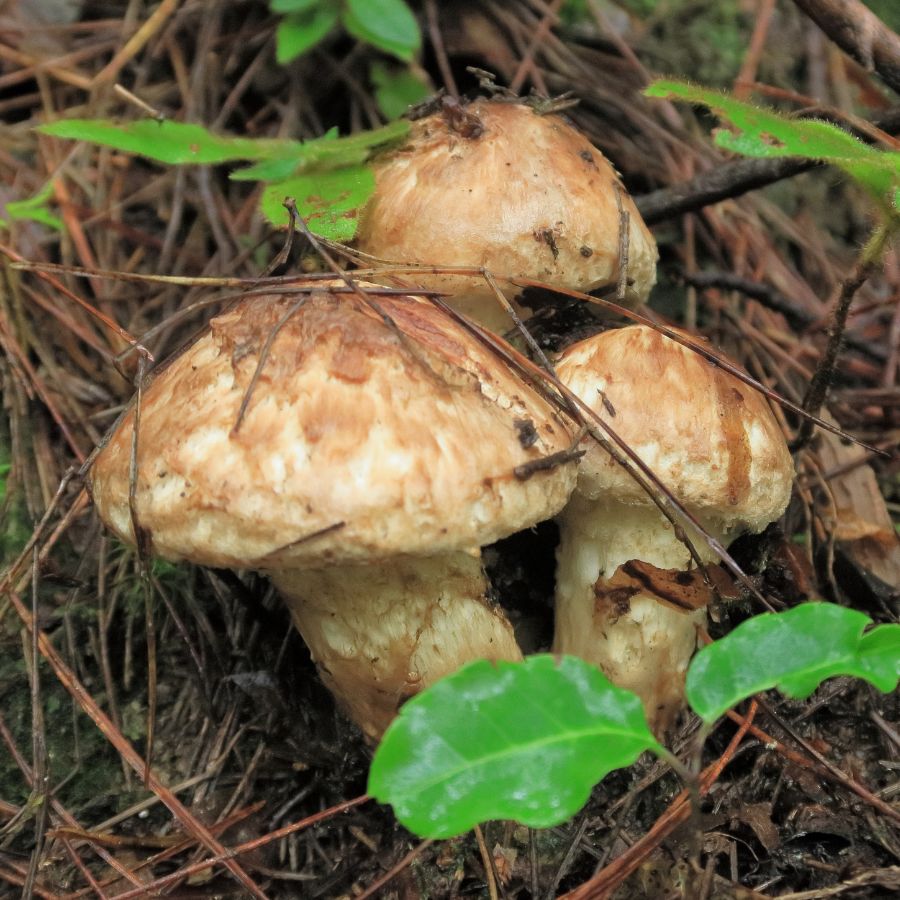
Forageables that are hard to reach or tricky to harvest often end up being more valuable. Some grow in dense forests, need careful digging, or have to be cleaned and prepared before use.
Matsutake mushrooms are a good example, because they grow in specific forest conditions and are hard to spot under layers of leaf litter. Wild ginger and black walnuts, meanwhile, both require extra steps for cleaning and preparation before they can be used or sold.
All of that takes time, effort, and experience. When something takes real work to gather safely, buyers are usually willing to pay more for it.
Foods That Keep Well Are More Valuable to Buyers
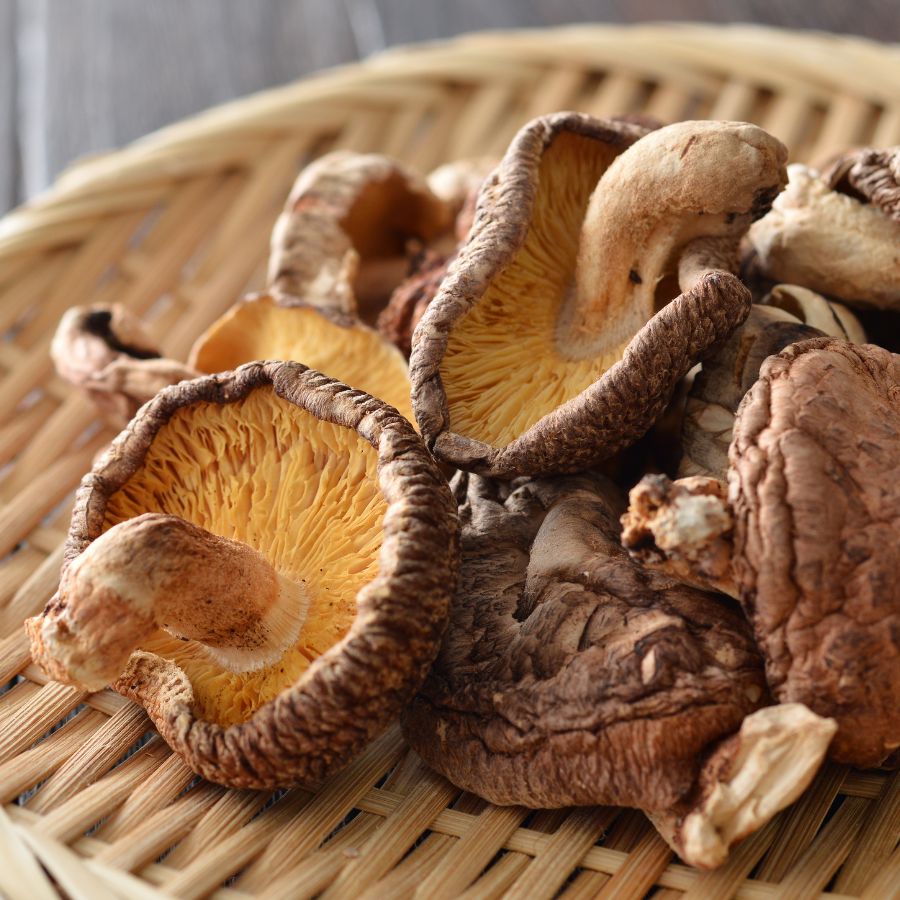
Some forageables, like dried morels or elderberries, can be stored for months without losing their value. These longer-lasting items are easier to sell and often bring in more money over time.
Others, like wild greens or edible flowers, have a short shelf life and need to be used quickly. Many easy-to-identify wild greens and herbs are best when fresh, but can be dried or preserved to extend their usefulness.
Foraging Mistakes That Cost You Big Bucks
When you’re foraging for high-value plants, mushrooms, or other wild ingredients, every decision matters. Whether you’re selling at a farmers market or stocking your own pantry, simple mistakes can make your harvest less valuable or even completely worthless.
Harvesting at the Wrong Time
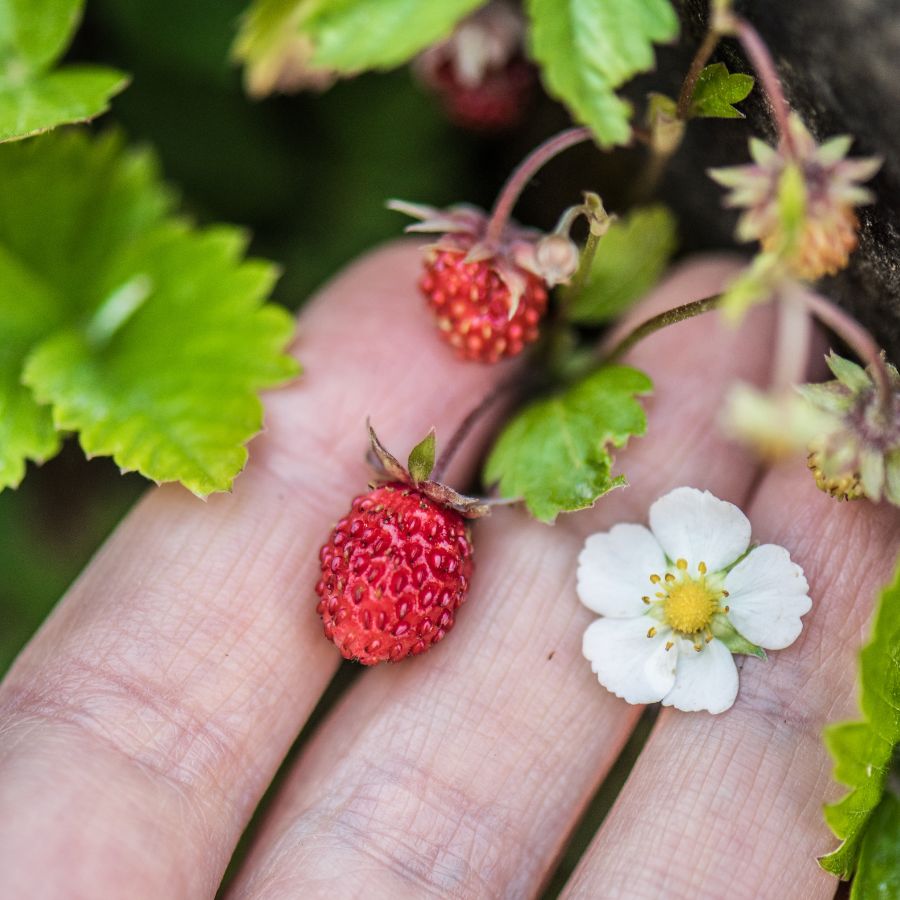
Harvesting at the wrong time can turn a valuable find into something no one wants. Plants and mushrooms have a short window when they’re at their best, and missing it means losing quality.
Morels, for example, shrink and dry out quickly once they mature, which lowers their weight and price. Overripe berries bruise in the basket and spoil fast, making them hard to store or sell.
Improper Handling After Harvest
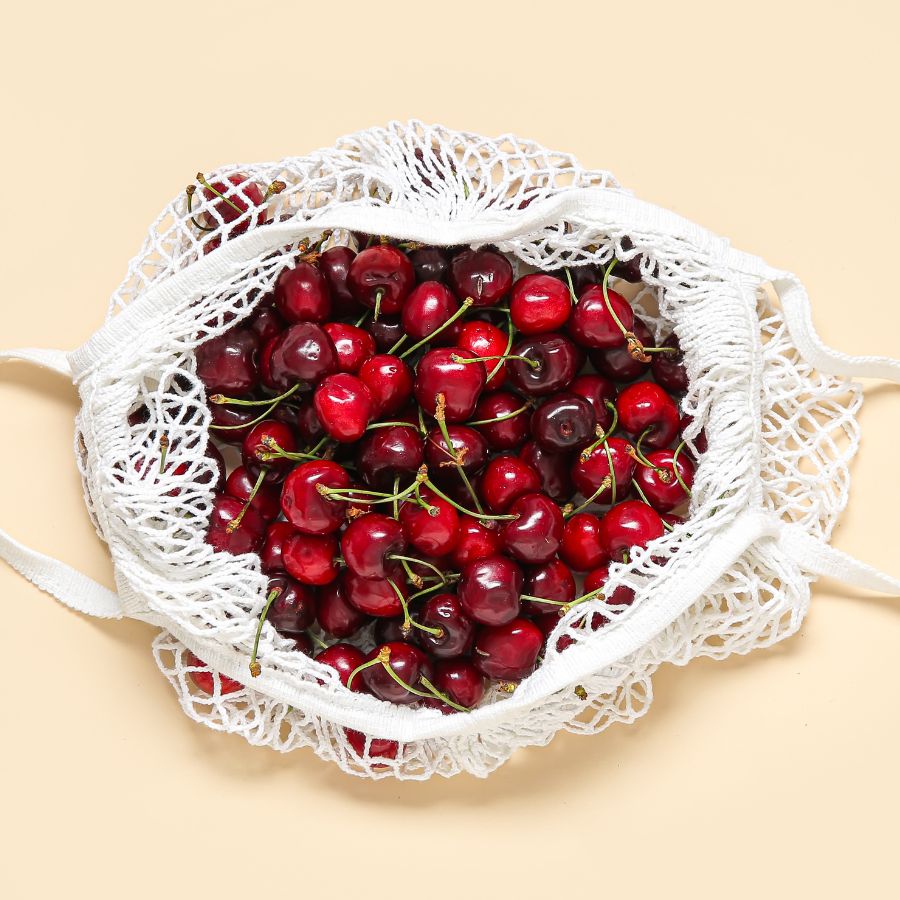
Rough handling can ruin even the most valuable forageables. Crushed mushrooms, wilted greens, and dirty roots lose both their appeal and their price.
Use baskets or mesh bags to keep things from getting smashed and let air circulate. Keeping everything cool and clean helps your harvest stay fresh and look better for longer.
This is especially important for delicate items like wild roots and tubers that need to stay clean and intact.
Skipping Processing Steps
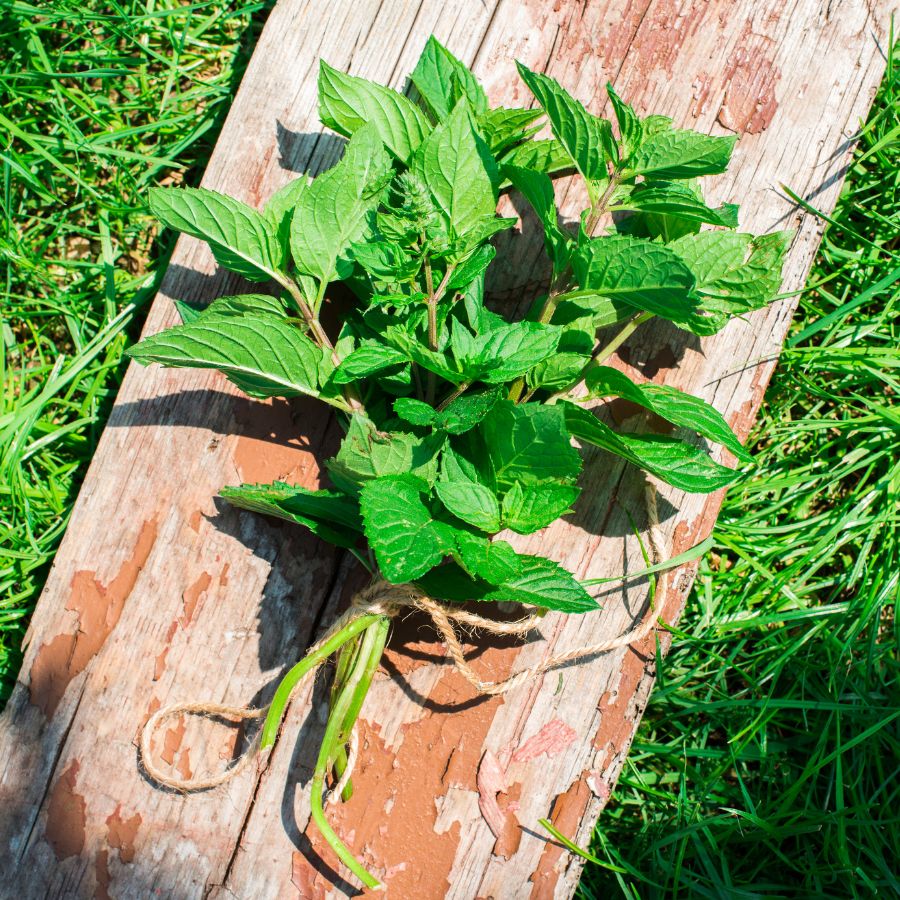
Skipping basic processing steps can cost you money. A raw harvest may look messy, spoil faster, or be harder to use.
For example, chaga is much more valuable when dried and cut properly. Herbs like wild mint or nettle often sell better when bundled neatly or partially dried. If you skip these steps, you may end up with something that looks unappealing or spoils quickly.
Collecting from the Wrong Area
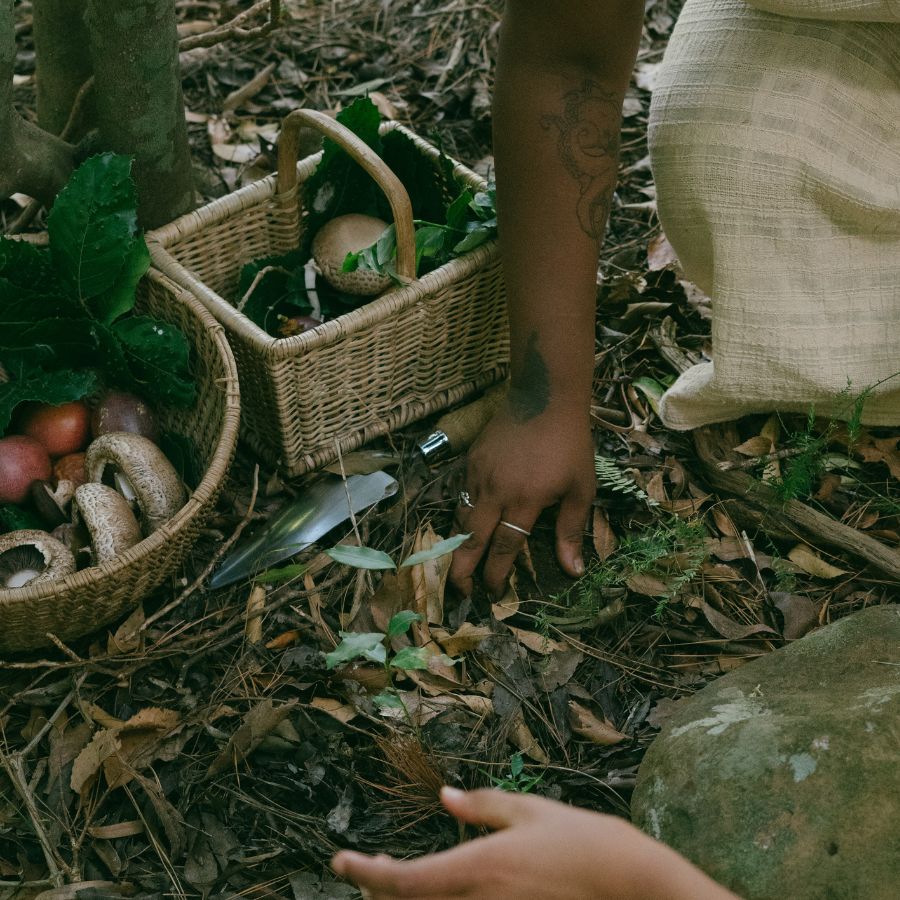
Harvesting in the wrong place can ruin a good find. Plants and mushrooms pulled from roadsides or polluted ground may be unsafe, no matter how fresh they look.
Buyers want to know their food comes from clean, responsible sources. If a spot is known for overharvesting or damage, it can make the whole batch less appealing.
These suburbia foraging tips can help you find overlooked spots that are surprisingly safe and productive.
Not Knowing the Market
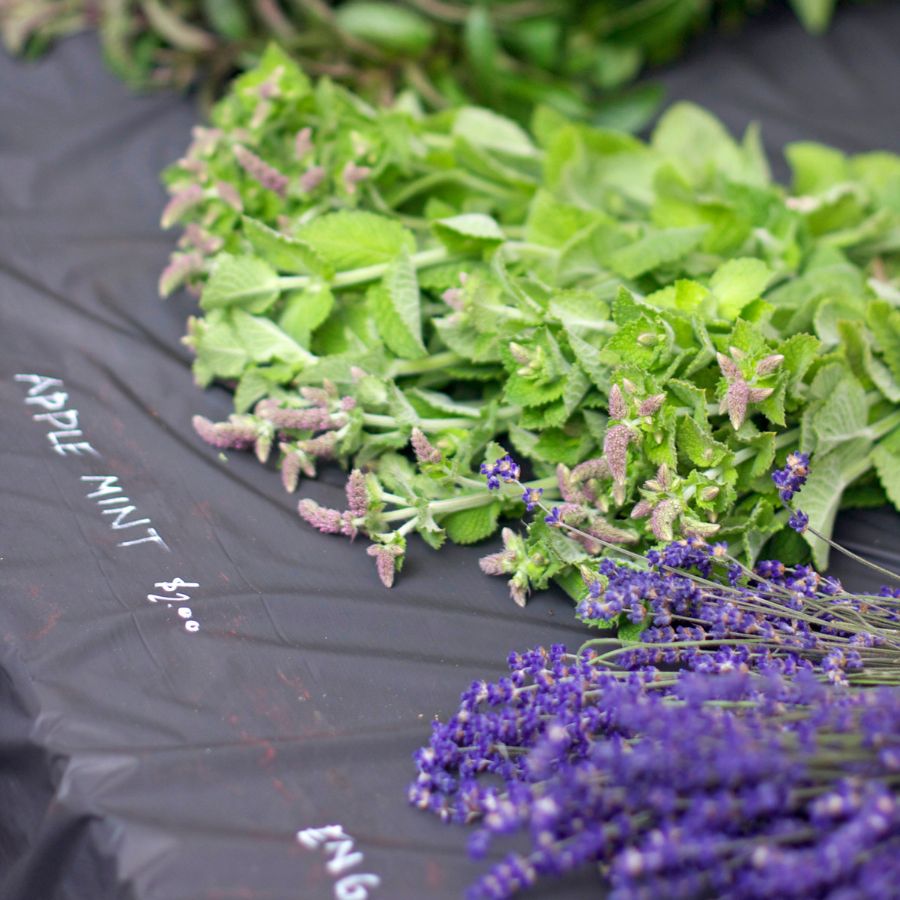
A rare plant isn’t valuable if nobody wants to buy it. If you gather in-demand species like wild ramps or black trumpets, you’re more likely to make a profit. Pay attention to what chefs, herbalists, or vendors are actually looking for.
Foraging with no plan leads to wasted effort and unsold stock. Keeping up with demand helps you bring home a profit instead of a pile of leftovers.
You can also brush up on foraging for survival strategies to identify the most versatile and useful wild foods.
Before you head out
Before embarking on any foraging activities, it is essential to understand and follow local laws and guidelines. Always confirm that you have permission to access any land and obtain permission from landowners if you are foraging on private property. Trespassing or foraging without permission is illegal and disrespectful.
For public lands, familiarize yourself with the foraging regulations, as some areas may restrict or prohibit the collection of mushrooms or other wild foods. These regulations and laws are frequently changing so always verify them before heading out to hunt. What we have listed below may be out of date and inaccurate as a result.
The Most Valuable Forageables in the State
Some of the most sought-after wild plants and fungi here can be surprisingly valuable. Whether you’re foraging for profit or personal use, these are the ones worth paying attention to:
Morel Mushroom (Morchella spp.)
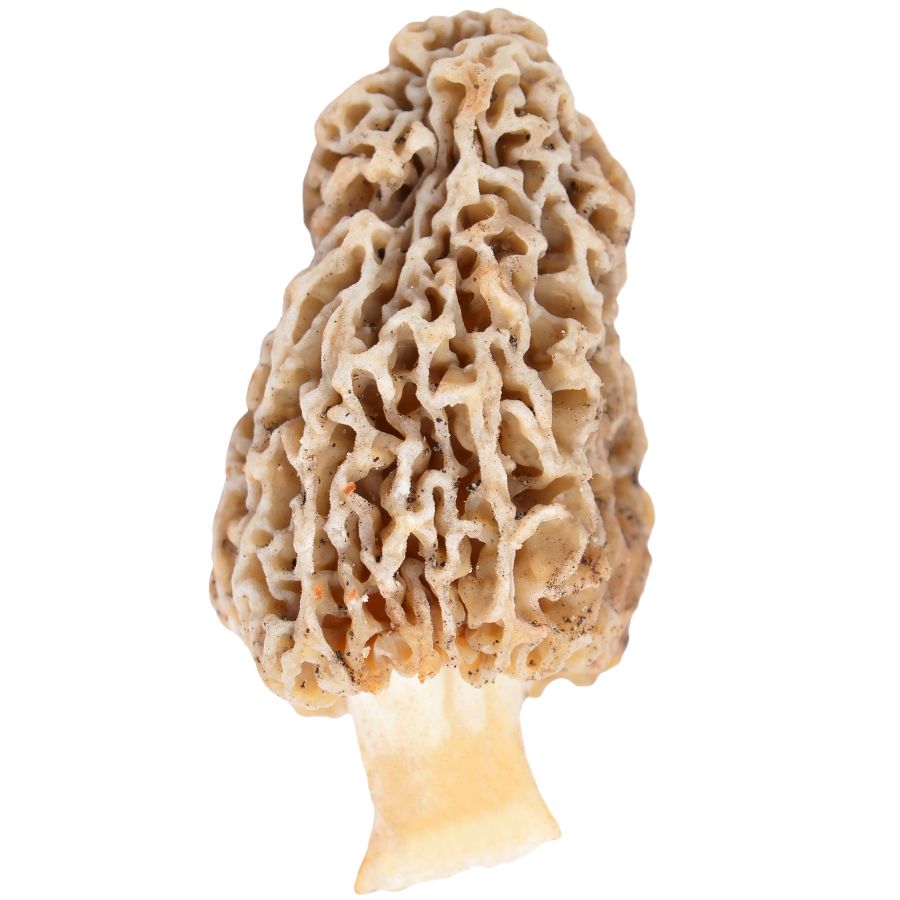
Morel mushrooms have a honeycomb-like surface with deep pits and ridges. The cap is fully attached to the stem, which helps set them apart from dangerous lookalikes like false morels that often have wrinkled, lobed caps and loose or cottony interiors.
The rich, nutty flavor and slightly chewy texture make morels a favorite in high-end kitchens. Many people sauté them in butter, stuff them, or dry them for later use because they hold their flavor extremely well.
Always cook morels thoroughly because raw ones can cause stomach upset, even when they look perfectly normal.
Morels are highly prized by chefs and home cooks, sometimes selling for over $50 per pound fresh and even more when dried.
Part of what makes morels so valuable is how hard they are to cultivate and find. They often grow in specific, unpredictable places, and their short harvesting window drives up both the demand and the price.
American Ginseng (Panax quinquefolius)
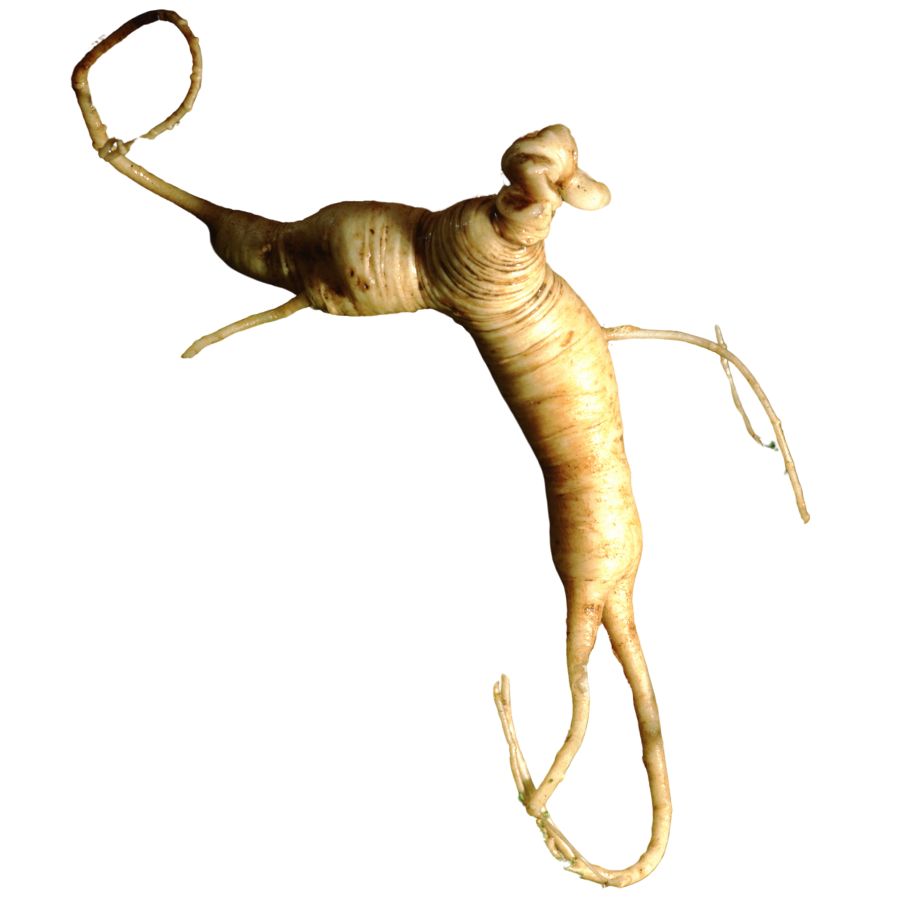
When you see a low herbaceous plant with a central stalk and a crown of leaves arranged like spokes, you’re probably looking at American ginseng. It can be mistaken for other woodland plants like wild sarsaparilla, but ginseng has fewer leaflets and a thicker rootstock.
Only the root is eaten, and it’s usually dried before use. Most people slice it and steep it in hot water or simmer it in soup, where its earthy, slightly sweet flavor comes through.
There’s no benefit to consuming the plant’s bright red berries or soft green leaves. Some even report nausea after ingesting parts of the plant other than the root.
Its value has made it one of the most sought-after wild plants in the U.S., with wild-harvested roots commanding steep prices depending on age and condition. A well-aged wild root with a classic forked shape can be worth several hundred dollars on the market.
Ramp (Allium tricoccum)
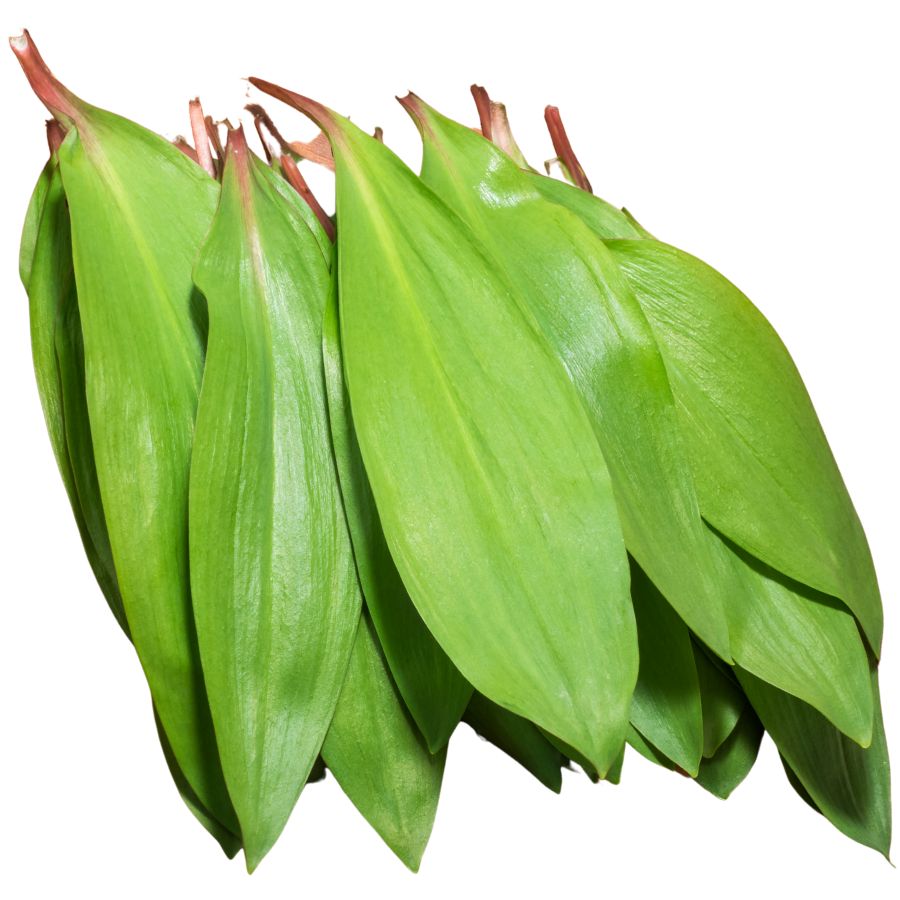
Ramps, often called wild garlic or wild leeks, are a flavorful edible plant prized by chefs and foragers alike. The plant has two or three wide green leaves, a reddish lower stem, and a white bulb with a strong onion-garlic aroma.
Toxic lookalikes like lily of the valley can confuse inexperienced foragers, but ramps always smell distinctly like onion when the leaves are torn. That scent is the easiest and most reliable clue for identification.
Cooks love using ramps in simple sautés, potato dishes, or blended into compound butters. The texture is soft and silky when cooked, while the raw bulbs offer a strong bite.
Their popularity in high-end cooking has made them one of the most expensive wild greens sold in markets. Because entire plants are often pulled for their bulbs, overharvesting has made sustainably gathered ramps even more valuable.
Chanterelle Mushroom (Cantharellus cibarius)
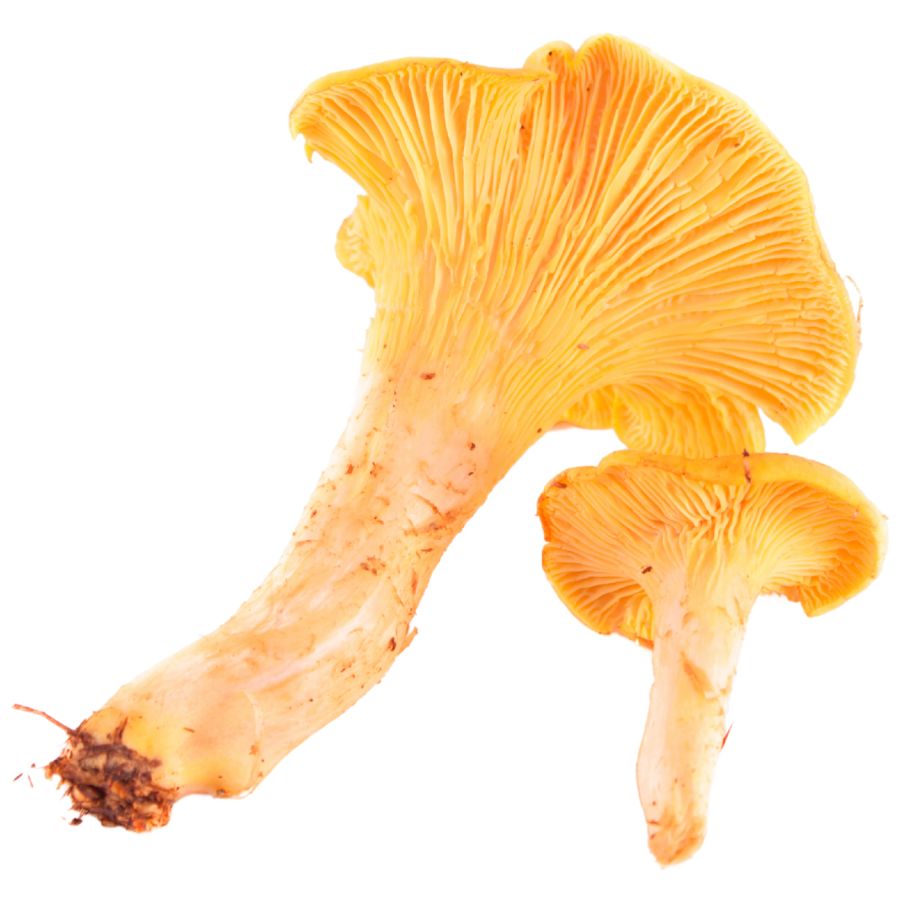
Golden chanterelles, also called egg mushrooms or girolles, are funnel-shaped and usually a bright yellow-orange with false gills that appear as deep, forked wrinkles. They have a fruity smell, almost like apricots, and a dense, meaty texture when cooked.
The part you want is the whole cap and stem, both of which soften nicely in butter or cream-based dishes. Their flavor is rich and peppery, which makes them popular in risottos, sautés, and soups.
A common lookalike is the jack-o’-lantern mushroom, which glows faintly in the dark and has true gills instead of shallow ridges. That one will give you stomach cramps, so pay close attention to the gill structure and color.
Fresh chanterelles can sell for over $20 per pound at farmers markets and restaurants, especially when demand is high. Their shelf life is short, but you can extend it by drying or pickling them soon after harvest.
Maitake (Grifola frondosa)
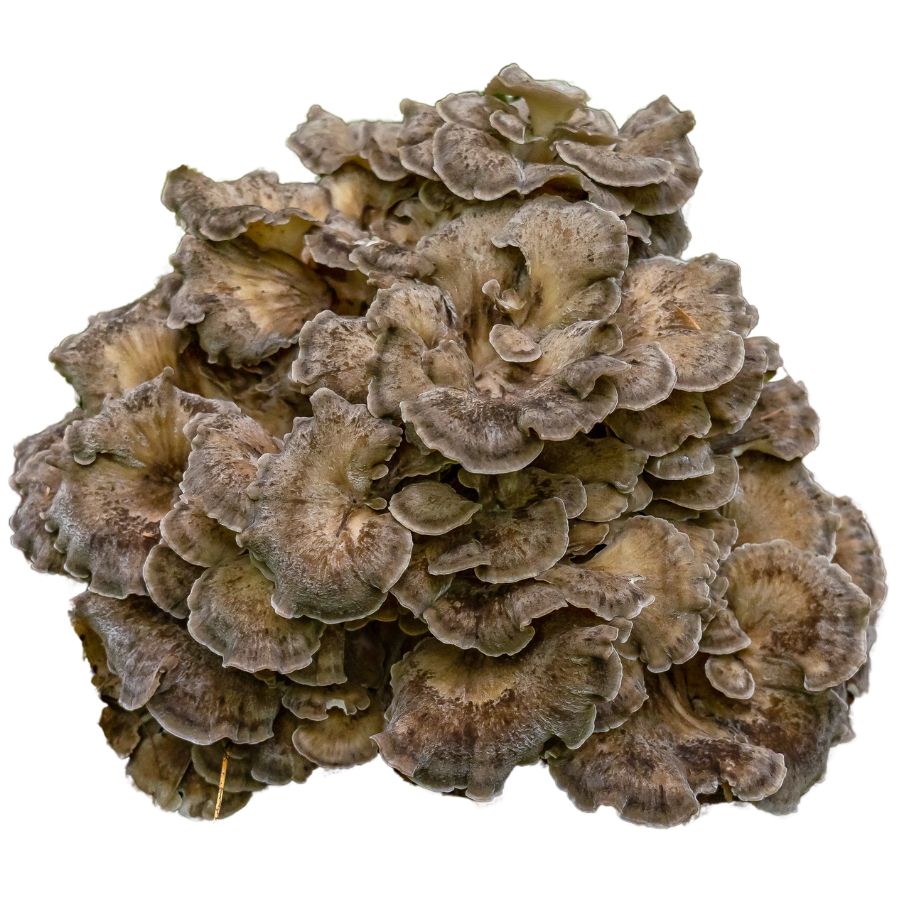
If you’ve ever found a large, leafy-looking mushroom near the base of an oak tree, it might’ve been maitake, also called hen of the woods. The lobes are soft, fan-shaped, and usually grow in a layered cluster that looks like brown petals.
Its flavor is strong and savory, and people often roast or fry it to bring out its concentrated taste. It’s firm when cooked, not spongy, and works well in grain bowls, stews, or simply on its own.
The whole fruiting body is edible, but the base can be fibrous and tough, so most people trim that part away.
While maitake does have a few lookalikes, like the umbrella polypore, most of them are thicker and less delicate in texture.
Fresh wild maitake can fetch high prices at specialty markets, and its shelf life improves dramatically when dehydrated. For those who forage or cook professionally, it’s one of the more valuable mushrooms to find.
Chicken of the Woods (Laetiporus sulphureus)
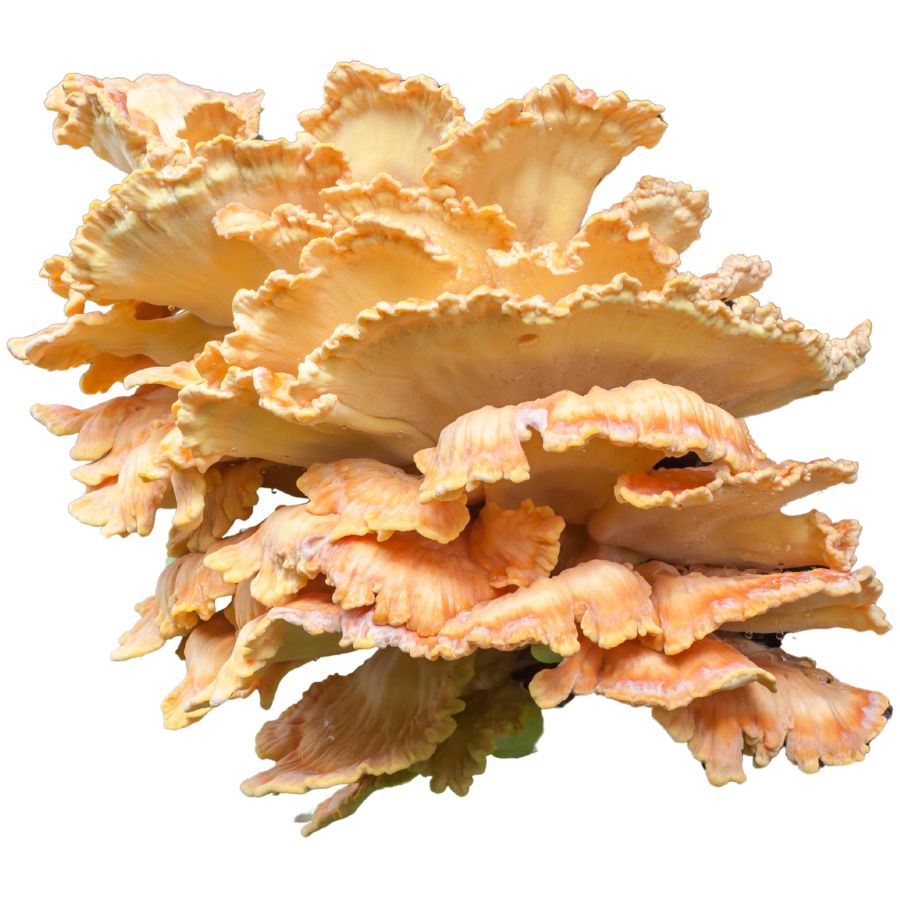
Chicken of the woods, also called sulfur shelf, grows in thick, shelf-like clusters with bright orange tops and yellow undersides. It develops on hardwood trees and fallen logs, forming a dense and slightly spongy mass.
Only the soft outer edges are typically eaten, while the older inner parts become tough and unpleasant. Its texture is meaty and chewy, and many people say it tastes a lot like chicken.
This mushroom doesn’t have gills and instead features tiny pores underneath, which helps separate it from toxic lookalikes like the jack-o’-lantern mushroom. The jack-o’-lantern has gills and glows faintly in the dark, which chicken of the woods does not.
Chicken of the woods is often sautéed, fried, or frozen for later, and can fetch a decent price at markets when fresh and tender. Just be careful—some people have reported mild stomach upset, especially when it’s harvested from conifers.
Elderberry (Sambucus nigra subsp. canadensis)
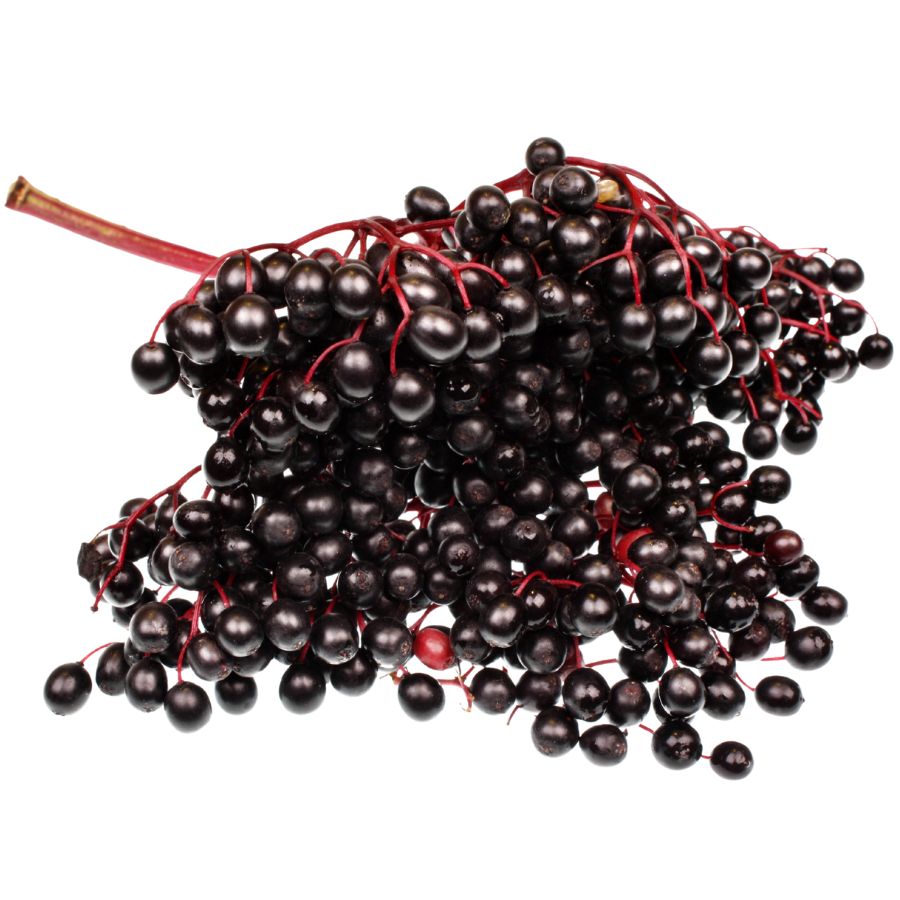
For centuries, elderberries has been gathered not just for food, but for making home remedies prized across the Southwest. Also called Mexican elder and tapiro, elderberry grows as a sprawling bush or small tree with clusters of tiny white flowers that turn into dusty blue-black berries.
There are toxic lookalikes you need to watch for, especially red elderberry, which has round clusters of bright red fruit. Elderberries grow in flatter, broader clusters and have a softer, more powdery appearance when ripe.
The berries have a deep, earthy flavor with a tart edge, and are usually cooked into jams, syrups, and baked goods to bring out their richness.
Make sure to avoid eating the raw berries, seeds, bark, or leaves because they can cause nausea unless they are properly cooked.
This plant stays valuable because the berries are used heavily in teas, tinctures, and syrups that people rely on for wellness, driving steady demand. Elderberries can also be dried and stored for months, making it even more profitable compared to foods that spoil quickly.
Groundnut (Apios americana)

Groundnut grows as a vining plant with compound leaves and reddish-purple flowers, but the part you’re after is buried underground. Its tubers are edible, protein-rich, and surprisingly high in calories compared to most wild plants.
They can be peeled and boiled like potatoes, or slow-roasted to bring out a nutty, slightly sweet taste. Some people mash them or slice them thin to fry into chips.
It’s easy to confuse groundnut with trailing wild beans or other legumes, especially if you’re only looking at the vines. The key difference is the string of bead-like tubers that groundnut sends down into the soil.
These tubers have drawn attention from permaculture growers and chefs for their nutritional value and earthy flavor. While not mass-produced, they can sell for over $15 per pound in niche food markets.
Black Walnut (Juglans nigra)
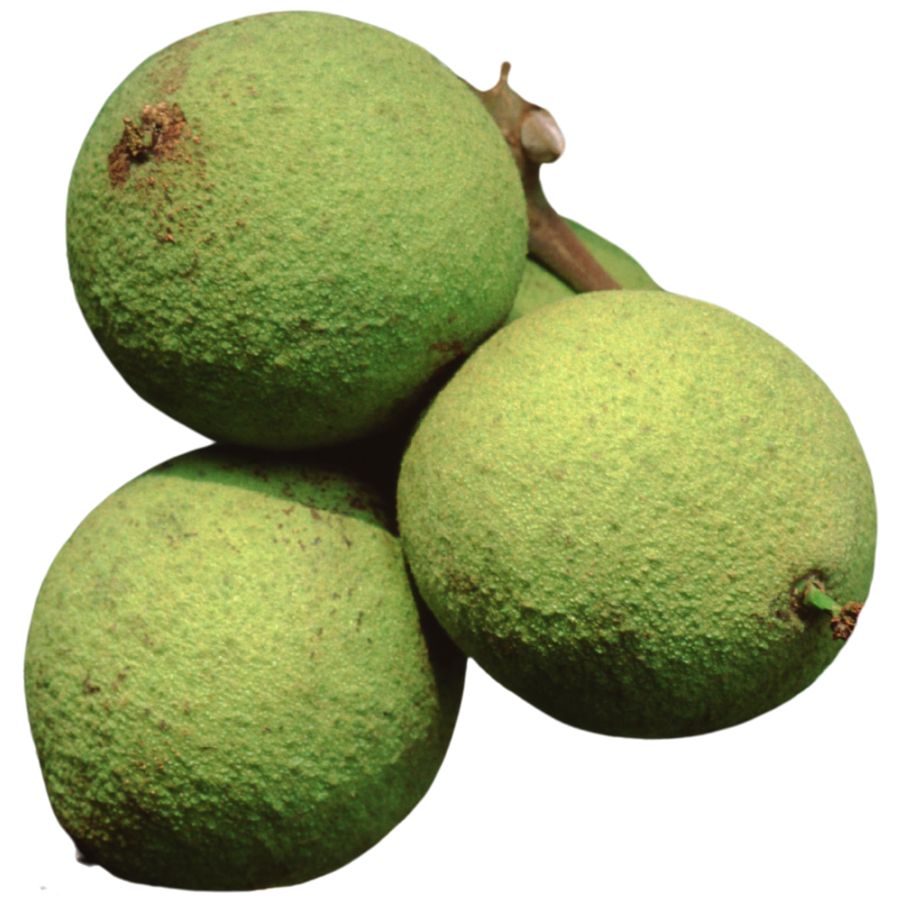
Black walnut grows a nut that’s prized for its strong, musky flavor and crunchy texture. The inner shell is extremely hard and often needs to be cracked with a vise or hammer to reach the oily, wrinkled seed inside.
Its nuts are most often roasted, chopped into desserts, or used in meat rubs and dressings. They’re also one of the few foraged tree nuts that can be stored long-term with very little processing.
The outer green husks leave a dark stain when bruised or broken open, and the nut itself is hidden inside a thick shell. While the fruit of the tree may resemble buckeye at first glance, black walnut leaves have a different shape and pattern, and buckeye seeds are toxic.
Prices stay high because harvesting takes time and experience, and the trees don’t lend themselves easily to large-scale production. Foragers and specialty food makers often pay a premium for wild black walnuts with intense flavor.
Ostrich Fern Fiddleheads (Matteuccia struthiopteris)
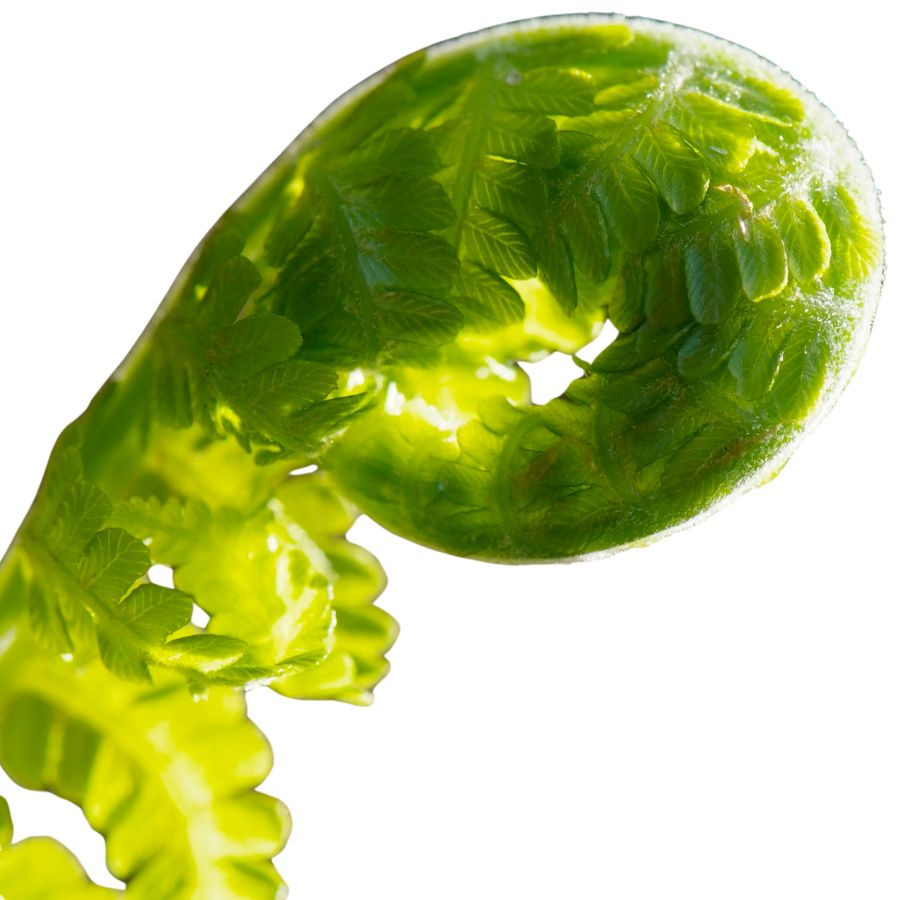
Ostrich fern fiddleheads, also referred to as fiddlehead greens or shuttlecock ferns, grow in tight green spirals that are eaten while still curled. Only the young shoots are edible and the rest of the plant should be left alone.
People often compare the flavor to a mix of spinach and asparagus, and the texture stays firm when cooked properly. The most common way to prepare them is by boiling or steaming, followed by a quick pan-fry.
These ferns are especially valuable to foragers and farmers’ markets because of how sought after they are in spring produce sales. A pound of fresh fiddleheads can sell for twenty dollars or more.
Lookalikes include bracken and lady fern, which can be toxic or cause digestive problems. Ostrich ferns have smooth green stalks and no fuzzy coating, unlike many of their less-safe counterparts.
Jerusalem Artichoke (Helianthus tuberosus)
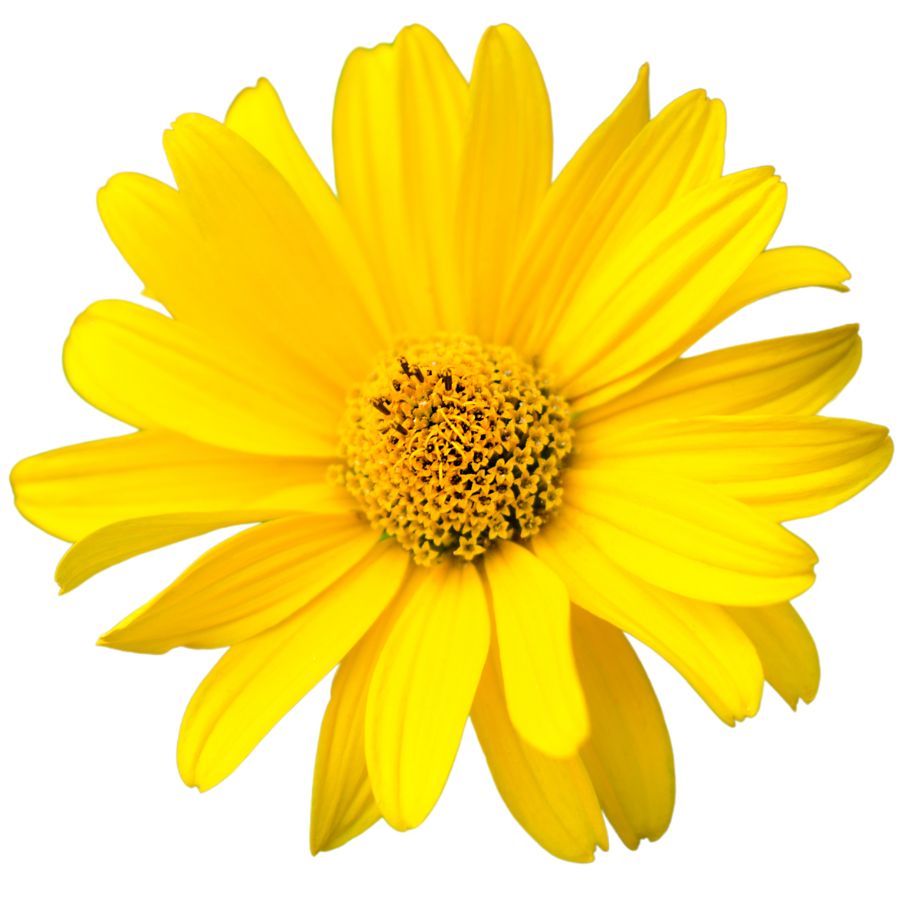
The Jerusalem artichoke is a sunflower relative that grows tall with bright yellow blooms and knobby, potato-like tubers underground. Its underground part is what you eat, while the stems, leaves, and flowers are best left alone.
What makes the tubers interesting is their crisp texture when raw and a nutty, slightly sweet flavor when cooked. They’re often roasted, pureed into soups, or sliced thin for chips.
Some wild sunflowers can look similar, but they don’t form the same type of tubers. If you’re not digging up a bumpy, tan root shaped like ginger, you’re not looking at the right plant.
People value Jerusalem artichokes for their culinary versatility and as a low-starch alternative to potatoes. They sell for a decent price at specialty grocers and farmers markets, especially when freshly dug.
American Hazelnut (Corylus americana)
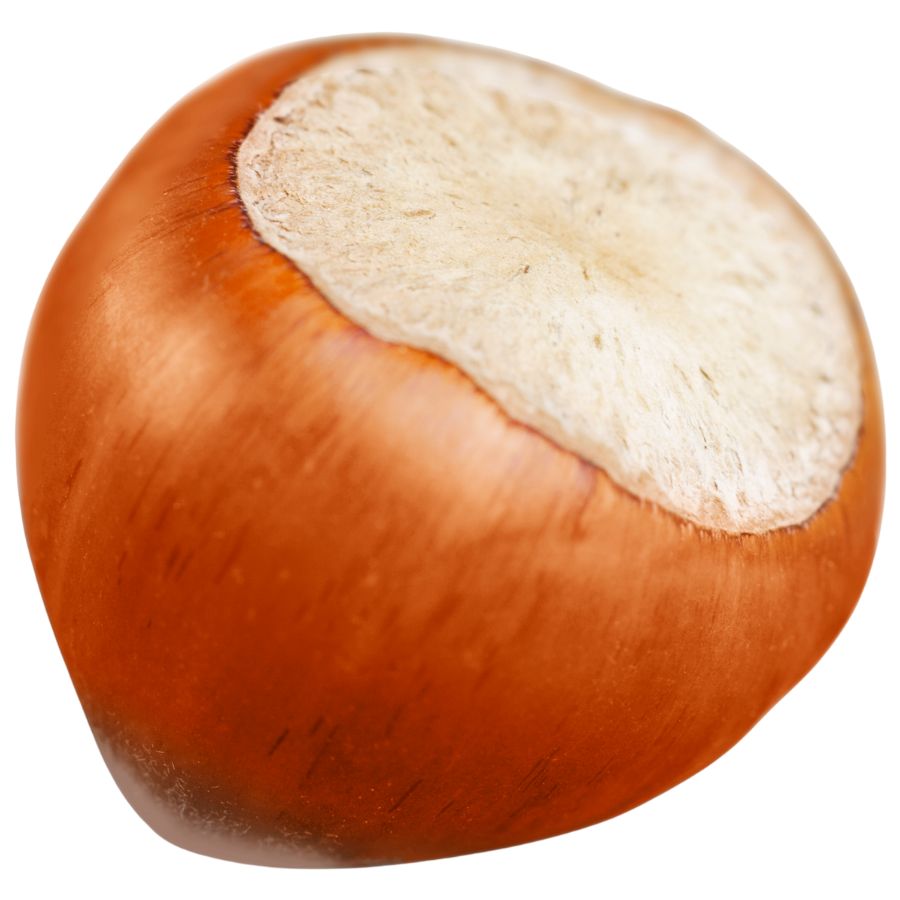
The American hazelnut produces edible nuts wrapped in a fuzzy, leaf-like casing with jagged edges. Its round nuts are sweet and dense, with a creamy texture that gets even better when toasted.
The main lookalike is beaked hazelnut, which has longer husks that taper to a point instead of staying round and leafy. Stick to harvesting only the nut, since the rest of the plant isn’t edible.
American hazelnuts are great for baking, making nut butters, or just snacking on after roasting. Some foragers dry them out completely to use later in cold-weather cooking.
While not as profitable as commercial filberts, these native hazelnuts still bring in decent money when sold in bulk. They’re valuable to anyone who wants a flavorful, nutrient-rich nut that stores well.
Fox Grape (Vitis labrusca)
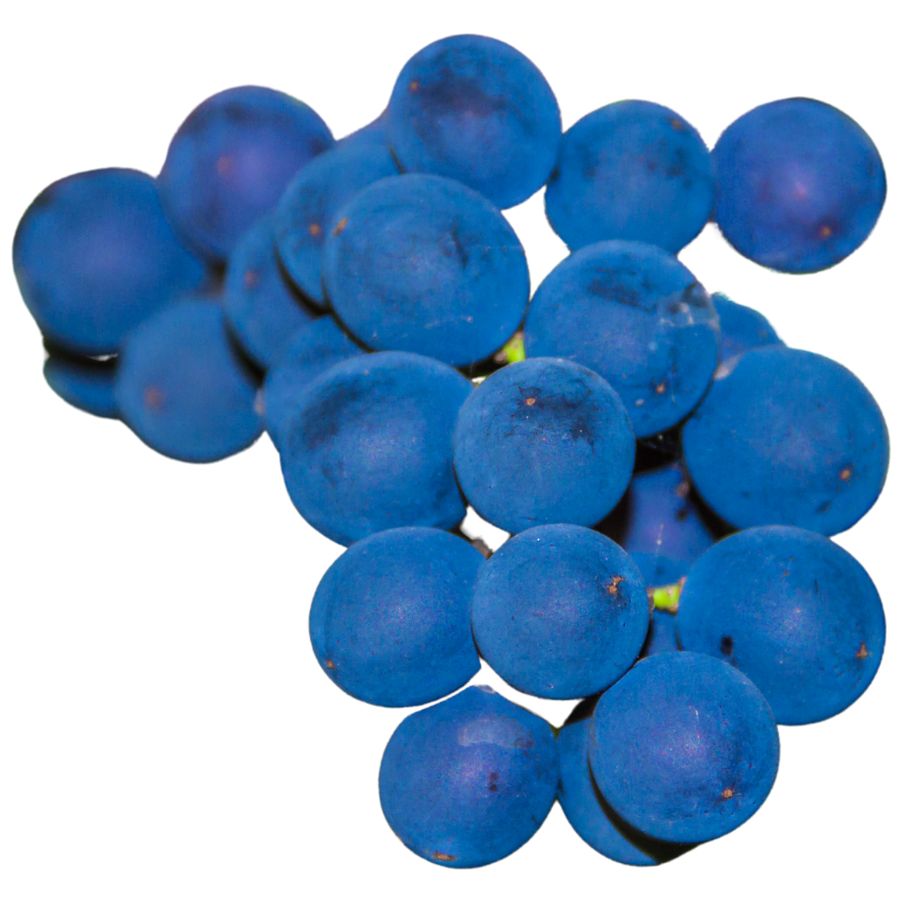
Fox grape is the source of that deep, rich flavor you taste in old-fashioned grape jelly and Concord-style wines. The fruit is dark, thick-skinned, and packed with a musky, sweet-tart punch.
It’s a bit labor-intensive to work with because of the skin and seeds, but it shines in cooked or fermented recipes. Juice and preserves made from it have strong market appeal in niche and local markets.
The leaves and vines aren’t edible, so stick to harvesting only the fruit. Don’t mix it up with moonseed, which grows similarly but contains toxic compounds and has a different seed shape.
Wild fox grape has limited commercial value compared to cultivated varieties, but it still holds a spot in regional food traditions. If you’re into foraging or homemade preserves, this one’s worth your time.
Lowbush Blueberry (Vaccinium angustifolium)
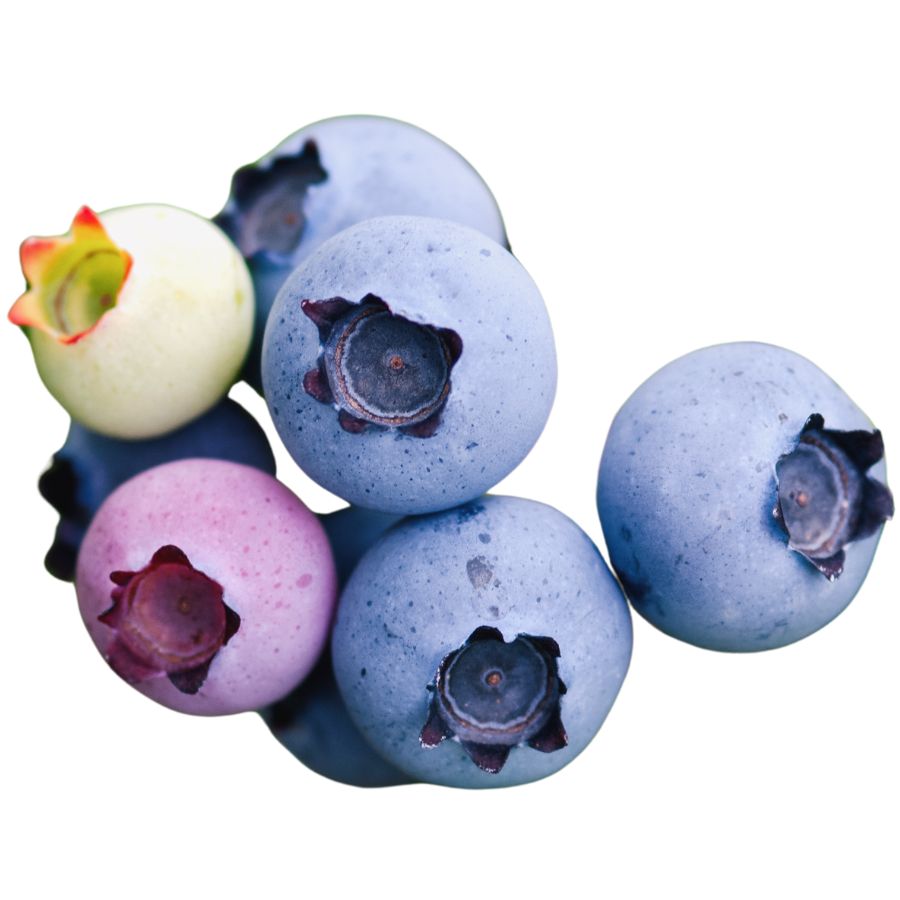
The lowbush blueberry, also called the wild blueberry, grows close to the ground and produces small, deep-blue fruits that are packed with flavor. Its leaves are narrow and finely toothed, and the plant spreads in dense mats across sandy or rocky soil.
People often confuse lowbush blueberry with black huckleberry, but huckleberries have larger seeds and a different leaf shape. The stems of huckleberry are also more resinous and rough, which helps tell them apart.
You can eat the berries raw, bake them into muffins or pies, or boil them down into jam. The skin is thin, the flesh is juicy, and the flavor is both tart and sweet.
Lowbush blueberries are prized for their strong flavor and high antioxidant content, which makes them popular in high-end health food products. Fresh berries can sell for several dollars per pound, and even more when processed into specialty goods.
Serviceberry (Amelanchier canadensis)
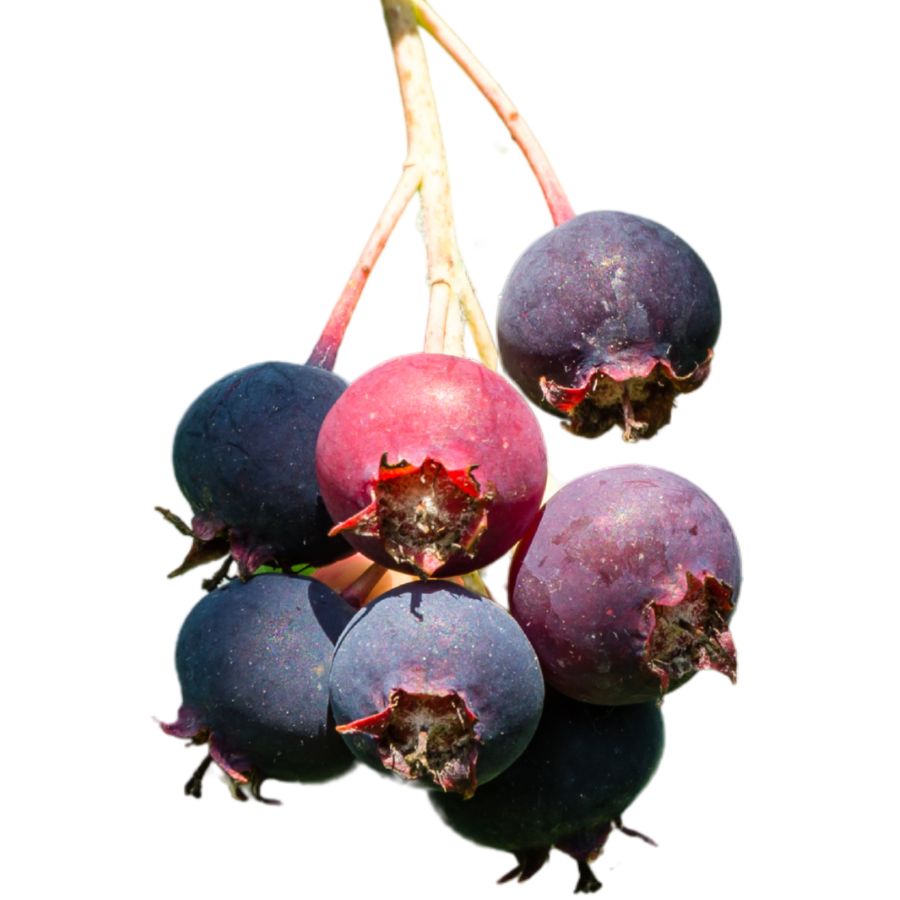
The fruit of serviceberry, also called shadbush or juneberry, looks like a small, purple-blue blueberry with a crown at the tip. It grows on a tall shrub or small tree with oval leaves and smooth gray bark.
You can eat the fruit raw, but it’s also cooked down into syrups, pies, and jellies because of its mild sweetness and soft texture. The taste is often compared to a mix of blueberry and almond.
Some people confuse serviceberry with chokecherry or buckthorn, but serviceberry fruits grow singly or in small clusters, not in long bunches, and the plant has no thorns. Its leaves are finely toothed and not serrated like chokecherry’s.
The fruit has a short shelf life when fresh, but it freezes well and dries into chewy, raisin-like bites. Dried serviceberries were valuable in trade and traditional foodways, and the fresh fruit can still fetch up to $15 per pound at markets.
Wild Strawberry (Fragaria virginiana)
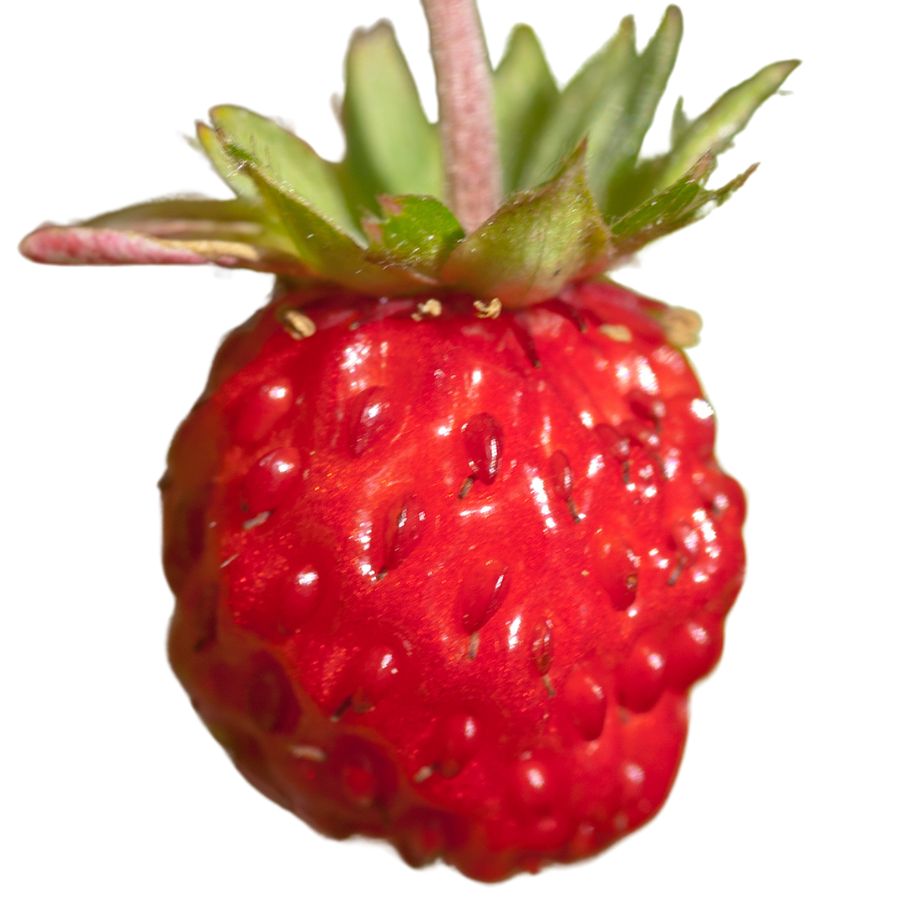
The wild strawberry has five-petaled white flowers and small red fruits that grow close to the ground on thin runners. Its toothed leaves grow in groups of three and are often mistaken for similar-looking plants like mock strawberry, which has yellow flowers and bland, dry fruit.
You can eat the ripe fruit, which has a sweet, concentrated strawberry flavor with a soft, juicy texture. Some people dry or freeze the berries, while others mash them into jam or cook them down into syrup.
The leaves and stems aren’t toxic, but they aren’t typically eaten either. Only the fruit is considered edible and worth harvesting.
Wild strawberries have limited commercial value because they’re small and delicate, but their taste is considered better than many store-bought varieties. That makes them popular in niche markets like gourmet preserves and foraged produce boxes.
Chokecherry (Prunus virginiana)
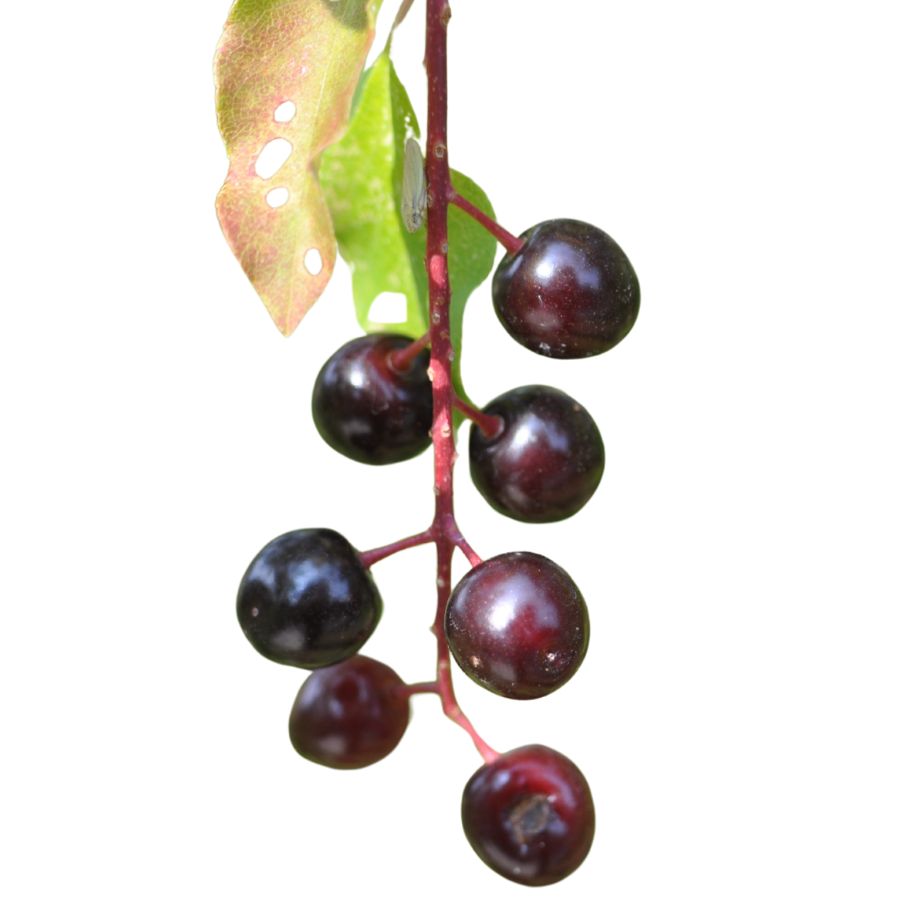
The fruit of chokecherry, also called bitter-berry or Virginia bird cherry, grows in dense clusters and ripens to a deep purple-black color. Its puckering taste is balanced out when cooked into jellies, syrups, or wine.
You can eat the skin and pulp, but the large pit inside contains toxic compounds and should never be consumed raw. Even the leaves and stems can be harmful if ingested.
Chokecherry has a tart, astringent flavor when fresh, but that changes entirely once heat and sugar are added. The texture softens nicely in jams and fruit leather.
The plant’s value comes from both its culinary uses and the fact that it grows abundantly in the wild. While not particularly high-priced, the fruits can still bring a decent return when sold in processed form.
Wintergreen Berries (Gaultheria procumbens)
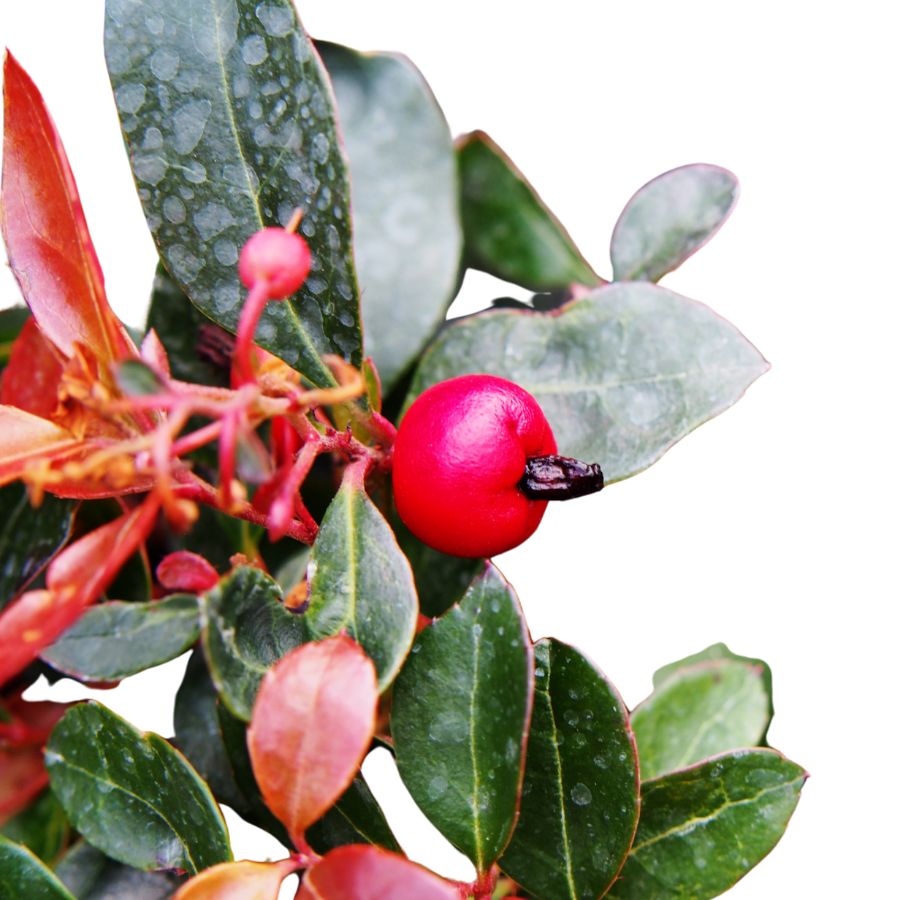
Wintergreen, also called checkerberry and teaberry, grows low to the ground and produces smooth, bright red berries along with leathery, oval leaves. The plant spreads by underground stems and often forms mats beneath forest trees.
The berries of wintergreen have a mild mint flavor and a chewy texture, and they’re often eaten raw or made into syrup or jelly. The leaves can also be chewed but tend to be tougher and more bitter.
It’s easy to confuse this plant with partridgeberry at a glance, but partridgeberry has two small blossom scars on each fruit instead of one, and its flavor is dull and earthy. Crushed wintergreen leaves release a strong minty smell that helps you tell them apart.
Wintergreen’s berries and leaves contain methyl salicylate, a compound related to aspirin, so it’s best not to eat too much at once. While not a major cash crop, a handful of foragers and small businesses still sell it in niche food markets.
Wild Bergamot (Monarda fistulosa)
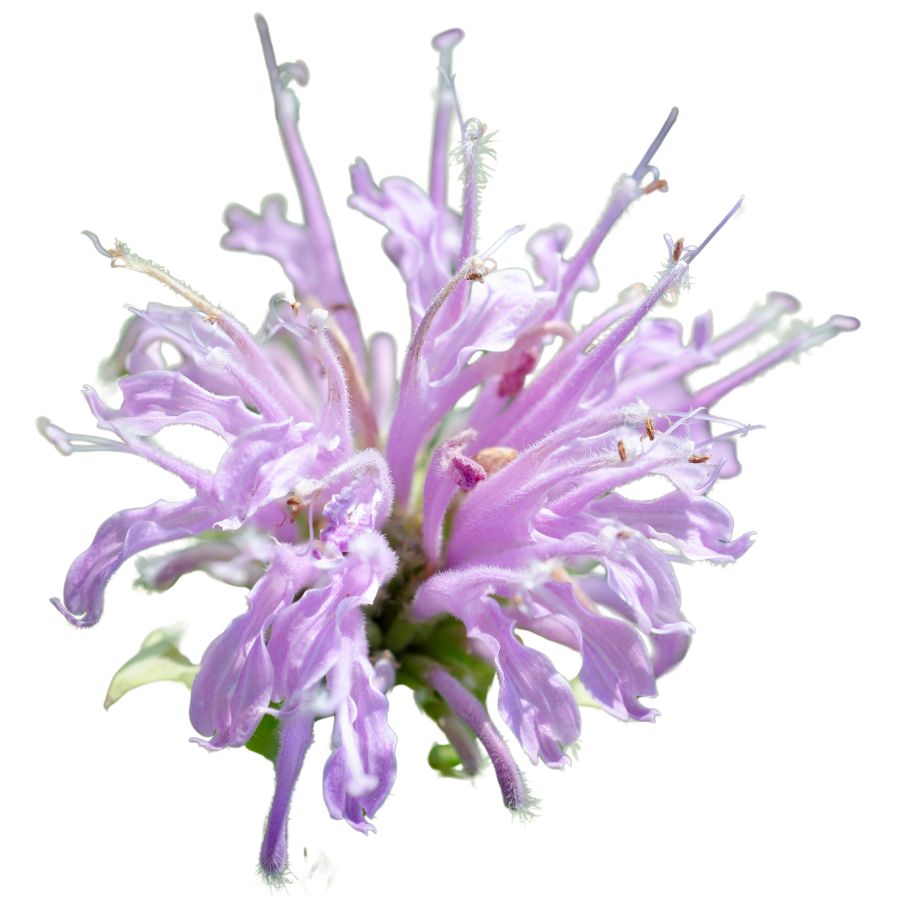
Wild bergamot, which also goes by names like bee balm and Oswego tea, has pale purple flowers that grow in tufted whorls and smell strongly when touched. The square stems and opposite leaves are a good indicator that you’re looking at a plant in the mint family.
The flavor is a mix of thyme and mint, and the texture is slightly coarse, especially when raw. People often use the flowers and leaves fresh in teas or dry them to store in jars.
It’s important to avoid confusing it with similar-looking mints that don’t have the same taste or safe track record. Some varieties of mountain mint, for example, have sharper scents and can cause digestive upset in larger amounts.
Even though it’s not a high-dollar herb, wild bergamot is valuable because of how much flavor you can get from just a few dried petals or leaves. That strong taste also means you don’t need much, which makes it last longer in the pantry.
Where to Find Valuable Forageables in the State
Some parts of the state are better than others when it comes to finding valuable wild plants and mushrooms. Here are the different places where you’re most likely to have luck:
| Plant | Locations |
| Morel Mushroom (Morchella spp.) | – Hudson Valley forests – Catskill Mountains – Finger Lakes National Forest |
| American Ginseng (Panax quinquefolius) | – Catskill Park – Allegheny State Park – Adirondack Park |
| Ramp (Allium tricoccum) | – Catskill Mountains – Hudson Valley woodlands – Taconic State Park |
| Chanterelle Mushroom (Cantharellus cibarius) | – Adirondack Park – Catskill Mountains – Finger Lakes National Forest |
| Maitake (Grifola frondosa) | – Hudson Valley oak forests – Allegheny State Park – Adirondack Park |
| Chicken of the Woods (Laetiporus sulphureus) | – Adirondack Park – Catskill Mountains – Finger Lakes National Forest |
| Elderberry (Sambucus nigra subsp. canadensis) | – Hudson Valley – Finger Lakes region – Adirondack Park |
| Groundnut (Apios americana) | – Hudson Valley wetlands – Long Island wetlands – Finger Lakes region |
| Black Walnut (Juglans nigra) | – Monroe County – Finger Lakes region – Hudson Valley |
| Ostrich Fern Fiddleheads (Matteuccia struthiopteris) | – Hudson Valley – Webster, NY – Adirondack Park |
| Jerusalem Artichoke (Helianthus tuberosus) | – Finger Lakes region – Long Island – Hudson Valley |
| American Hazelnut (Corylus americana) | – Long Island – Hudson Valley – Adirondack Park |
| Fox Grape (Vitis labrusca) | – Hudson Valley – Finger Lakes region – Adirondack Park |
| Lowbush Blueberry (Vaccinium angustifolium) | – Adirondack Park – Catskill Mountains – Hudson Valley |
| Serviceberry (Amelanchier canadensis) | – Adirondack Park – Catskill Mountains – Hudson Valley |
| Wild Strawberry (Fragaria virginiana) | – Adirondack Park – Catskill Mountains – Hudson Valley |
| Chokecherry (Prunus virginiana) | – Adirondack Park – Catskill Mountains – Hudson Valley |
| Wintergreen Berries (Gaultheria procumbens) | – Adirondack Park – Catskill Mountains – Hudson Valley |
| Wild Bergamot (Monarda fistulosa) | – Hudson Valley – Catskill Mountains – Adirondack Park |
When to Forage for Maximum Value
Every valuable wild plant or mushroom has its season. Here’s a look at the best times for harvest:
| Plants | Valuable Parts | Best Harvest Season |
| Morel Mushroom (Morchella spp.) | Fruiting bodies | April to May |
| American Ginseng (Panax quinquefolius) | Roots | September to October |
| Ramp (Allium tricoccum) | Leaves and bulbs | April to May |
| Chanterelle Mushroom (Cantharellus cibarius) | Fruiting bodies | July to September |
| Maitake (Grifola frondosa) | Fruiting bodies | September to November |
| Chicken of the Woods (Laetiporus sulphureus) | Fruiting bodies | June to October |
| Elderberry (Sambucus nigra subsp. canadensis) | Berries and flowers | June (flowers), August (berries) |
| Groundnut (Apios americana) | Tubers | September to November |
| Black Walnut (Juglans nigra) | Nuts | September to October |
| Ostrich Fern Fiddleheads (Matteuccia struthiopteris) | Young fronds (fiddleheads) | April to May |
| Jerusalem Artichoke (Helianthus tuberosus) | Tubers | October to November |
| American Hazelnut (Corylus americana) | Nuts | August to September |
| Fox Grape (Vitis labrusca) | Fruit and leaves | August to October |
| Lowbush Blueberry (Vaccinium angustifolium) | Berries | July to August |
| Serviceberry (Amelanchier canadensis) | Berries | June |
| Wild Strawberry (Fragaria virginiana) | Berries | May to June |
| Chokecherry (Prunus virginiana) | Berries | July to August |
| Wintergreen Berries (Gaultheria procumbens) | Berries and leaves | October to February |
| Wild Bergamot (Monarda fistulosa) | Leaves and flowers | July to August |
One Final Disclaimer
The information provided in this article is for general informational and educational purposes only. Foraging for wild plants and mushrooms involves inherent risks. Some wild plants and mushrooms are toxic and can be easily mistaken for edible varieties.
Before ingesting anything, it should be identified with 100% certainty as edible by someone qualified and experienced in mushroom and plant identification, such as a professional mycologist or an expert forager. Misidentification can lead to serious illness or death.
All mushrooms and plants have the potential to cause severe adverse reactions in certain individuals, even death. If you are consuming foraged items, it is crucial to cook them thoroughly and properly and only eat a small portion to test for personal tolerance. Some people may have allergies or sensitivities to specific mushrooms and plants, even if they are considered safe for others.
Foraged items should always be fully cooked with proper instructions to ensure they are safe to eat. Many wild mushrooms and plants contain toxins and compounds that can be harmful if ingested.

